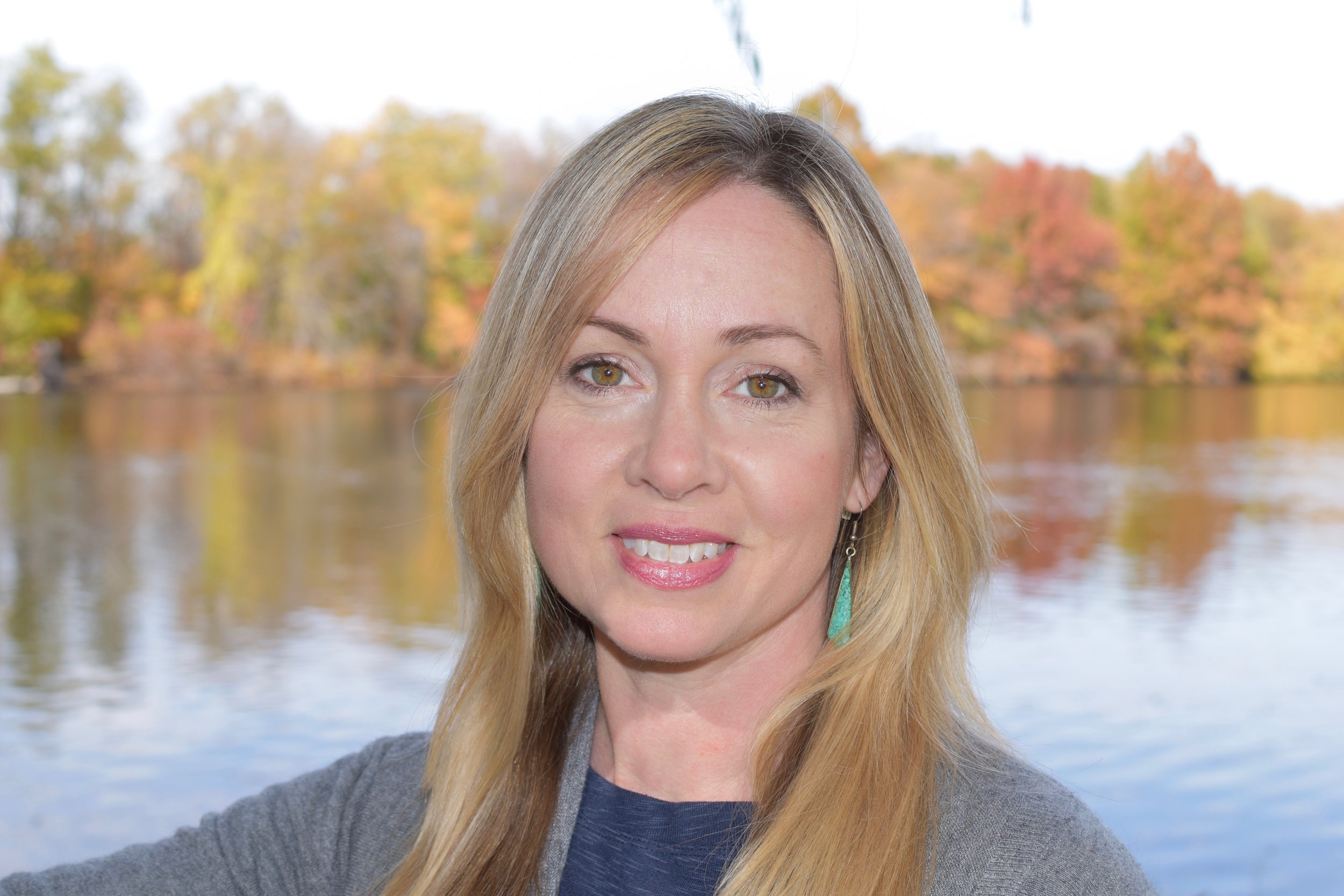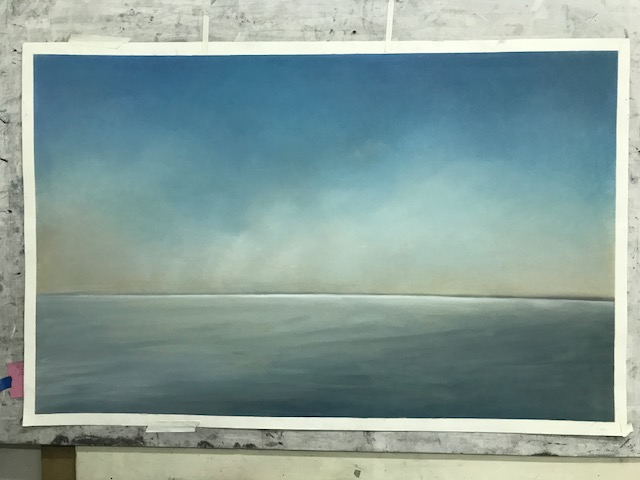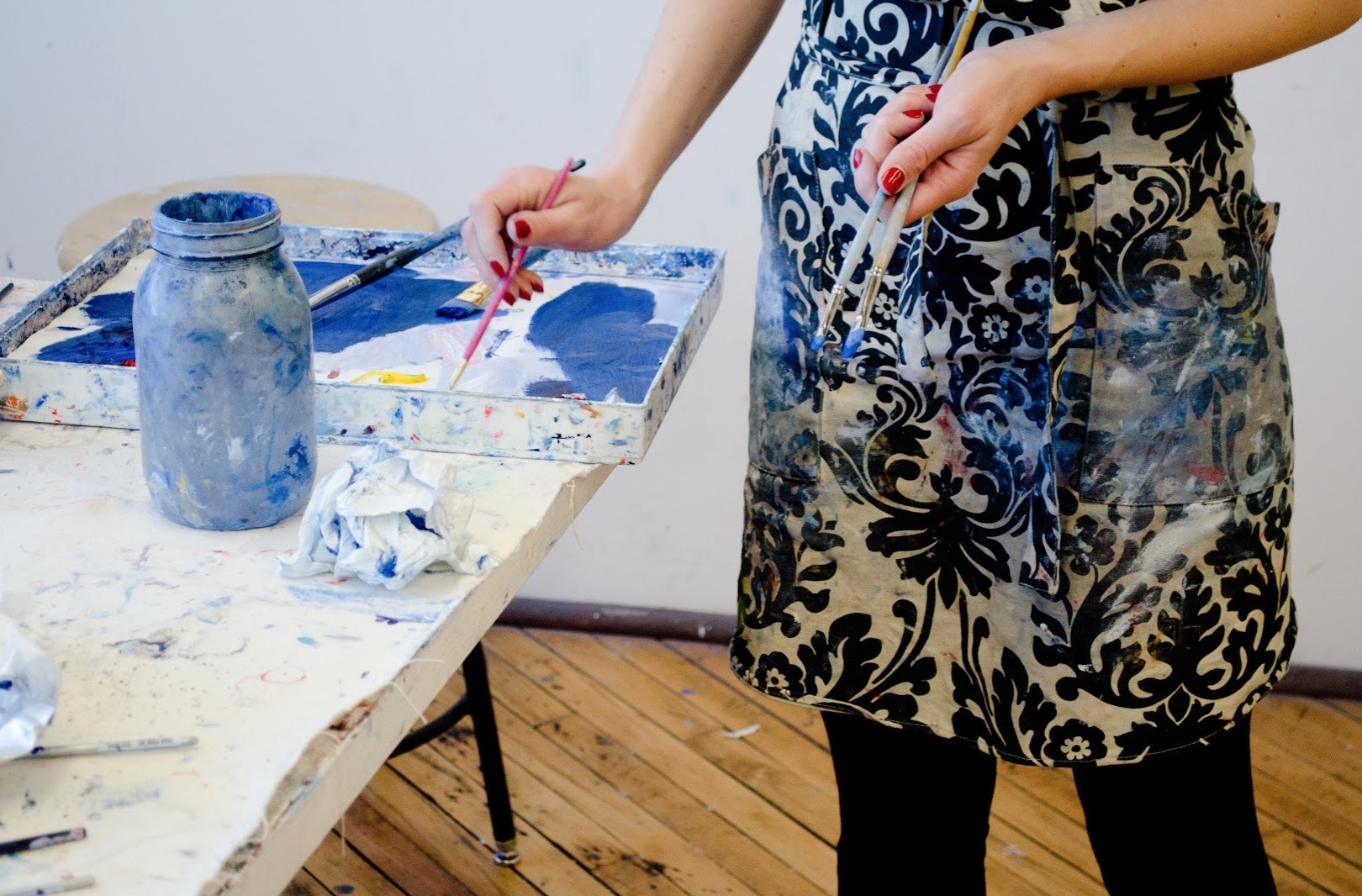Brushstrokes: A lesson in patience from CoCo Artist, Erica H.
"When you look closer, you notice the thousands of little dots that make up the image...I've gotten to where I am in my art career because of thousands of hours of practice over the last 7 years."
Today's artist feature, CoCo Artist Erica H., offers a path for those of us who are struggling with the uncontrollable circumstances before us. Erica's trajectory as an artist as well as the technique required in her artwork are visual representations of the patience, faith, and joy with which she operates on a daily basis. Reading her story and noticing her extreme attention to detail may be just the thing to inspire ideas on how to fill your free time without worrying too much about how long it will take for something to be over.
How would you describe your artwork?
I use a technique called stippling to create hyper realistic images. I mainly work with black ink on white paper. I like creating pieces that look like they’re a photograph, but when you look closer, you notice the thousands of little dots that make up the image. When you see how many dots there are, you’re able to understand how much time I put into my artwork and I think this makes the artwork special to the client.
Tell us about your training as an artist.
I am a self-taught artist and I have gotten to where I am in my art career because of thousands of hours of practice over the last 7 years. When I discovered that art is my passion, it became easy for me to practice drawing because I love doing it so much. Growing up I believed that artists were born with their talent and you either had it or you didn’t. I was inspired by other artists who were self taught and had a crazy work ethic and I realized that if I wanted to be successful in the art world, I would need to work just as hard, if not harder.
Who is your art for?
My art is for people who enjoy detail and appreciate attention to detail. Because my pieces can take over 100 hours to make, people who respect the process enjoy seeing my work.
What does your work of art bring to its environment?
My artwork brings a clean, sharp aesthetic to its environment. Because I use black ink on white paper, there is a bold contrast that people enjoy.
What is your artistic/creative process?
The first thing that I do when I am starting a project is to sketch out the image lightly with a pencil. I don’t do any shading with the pencil, just a quick light sketch to lay things out and make sure that I have the proportions right. With hyper realism, it is crucial that everything is exactly where it needs to be. If anything is slightly off, it won’t look realistic. After I sketch things out and I’m pleased with the layout, I use my pen and dot along the pencil line lightly. When I’ve outlined everything with the dots, I erase the pencil mark. Then I go in and start to shade the image with the black ink dots. The darkest areas get the most dots and the lighter areas get fewer dots with more space in between them.
What is the most important part of the artistic/creative process for you?
The most important part of my process is the initial sketch and layout. Even a misplaced dot could throw off an entire drawing by messing up a facial expression and making the drawing look off. I’ve had to start over after 60 hours of work on a commission because a few misplaced dots changed the face of a baby in a drawing. The initial sketch is everything.
What is your favorite piece and why?
My favorite piece is a piece I call Dreamer. Often times you will see clouds in my work. I use clouds to represent dreams. When I am day dreaming, I look up at the sky and that’s where I see clouds. I also love how the clouds and the sky is never the same. It is always changing. This represents change in our lives and the evolution of our dreams and goals. In Dreamer I have drawn a picture of a woman with clouds on her head. This represents women wearing their dreams proudly and not being afraid or intimidated to show the world what she hopes to achieve. When I first got into art, I was afraid to tell people that I wanted to become a full time artist one day. I was intimidated by their judgement about how hard it would he and I often wondered if I had what it took. This drawing means a lot to me because it represents strength and the belief in ones’ self.
Tell us about an interesting piece that you have displayed in your own home?
I have a piece that I did a couple of years ago hanging in my living room that I call Misshattan. It is a drawing of a woman wearing a crown made up of New York City iconic buildings and landmarks. I grew up in a college town in the middle of Pennsylvania. So, you can imagine my shock when first moving to a city like Manhattan. You are constantly surrounded by the hustle and the fast pace of life. This can become overwhelming or you can embrace it and own it. Misshattan represents a woman owning the city, embracing the hustle and wearing her city like a crown. She’s using the power for strength instead of carrying it with her as a burden. This piece is for sale, so for a while I had it in a closet all wrapped up. But I decided to have it out where I can see it all of the time because it is one of my favorites but it also is a great reminder to me of what I am trying to do with my art career and daily motivation to make things happen. It is hanging in my living room so that I can see it all of the time.
What are you working on now?
I am working on a balloon letter commission of the number 15. It is a gift for a woman who played collegiate basketball and wore the number 15.
What is your favorite thing about doing a commission?
My favorite thing about doing a commission is putting so much time and effort into a piece that is special to the client. Maybe it is a special photograph or a photograph of something that is meaningful to that person. Whatever it is that I am drawing, it has a great meaning to the client, so meaningful that they want the care and detail and time it takes to recreate it in a piece of art they will have forever. I feel that and that care goes into each hour I spend on the piece.
Tell us about your favorite commission.
My favorite commission I have done was for an NFL player after his team won the super bowl a few years back. He broke a record for the longest punt return in Super Bowl history. His wife had me draw a picture of him that was taken during that run. The best part was getting a picture of the framed drawing with his super bowl ring sitting on top of it. That was special.


























































